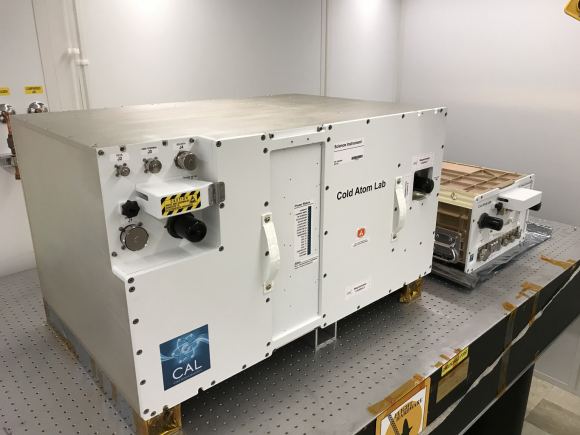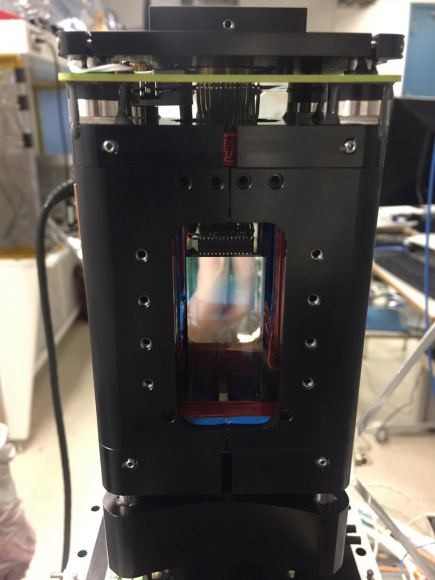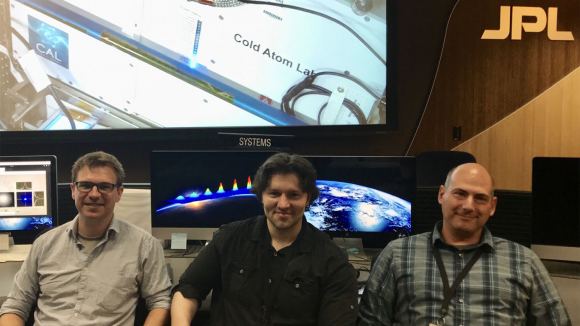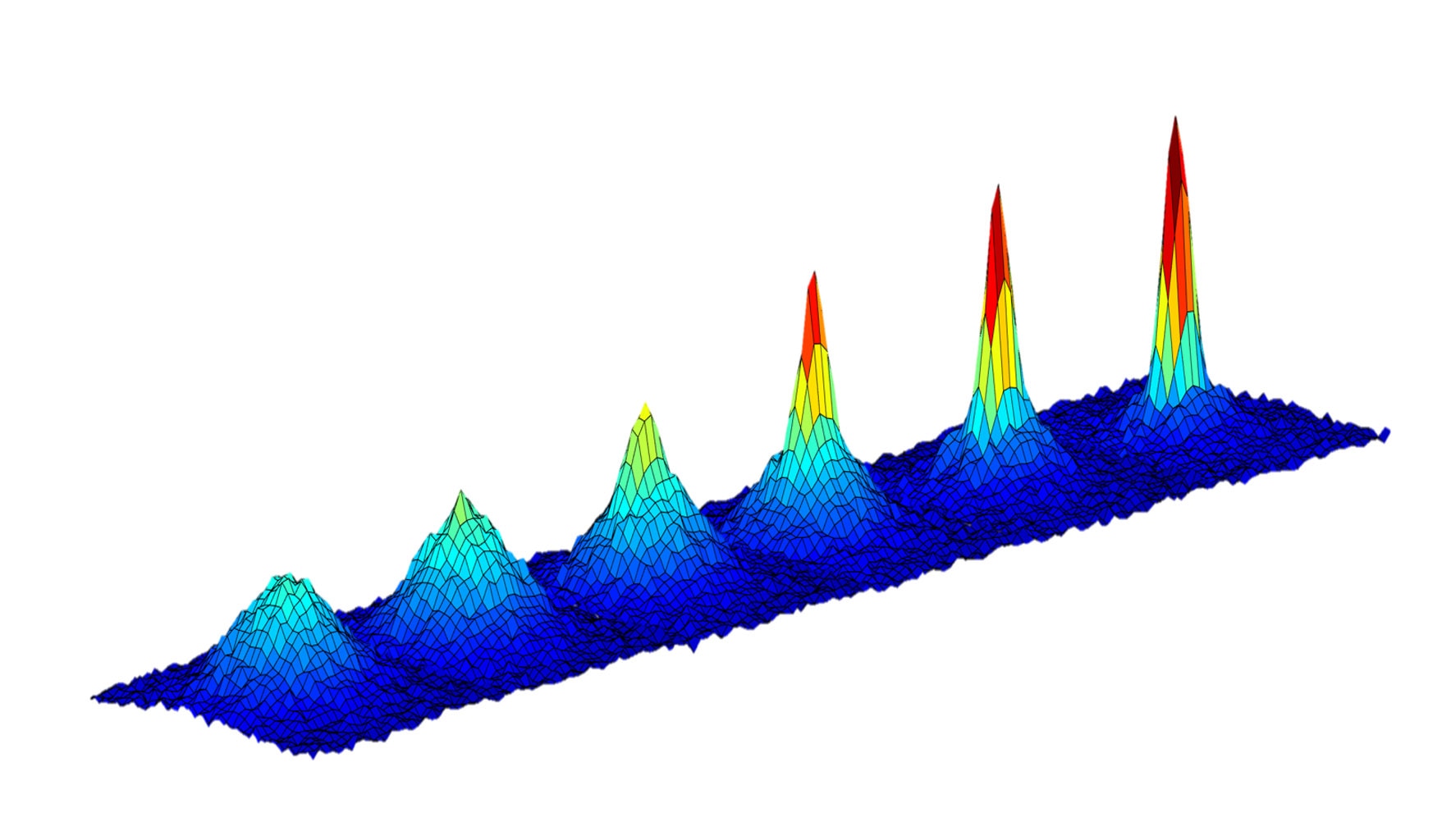Despite decades of ongoing research, scientists are trying to understand how the four fundamental forces of the Universe fit together. Whereas quantum mechanics can explain how three of these forces things work together on the smallest of scales (electromagnetism, weak and strong nuclear forces), General Relativity explains how things behaves on the largest of scales (i.e. gravity). In this respect, gravity remains the holdout.
To understand how gravity interacts with matter on the tiniest of scales, scientists have developed some truly cutting-edge experiments. One of these is NASA’s Cold Atom Laboratory (CAL), located aboard the ISS, which recently achieved a milestone by creating clouds of atoms known as Bose-Einstein condensates (BECs). This was the first time that BECs have been created in orbit, and offers new opportunities to probe the laws of physics.
Originally predicted by Satyendra Nath Bose and Albert Einstein 71 years ago, BECs are essentially ultracold atoms that reach temperatures just above absolute zero, the point at which atoms should stop moving entirely (in theory). These particles are long-lived and precisely controlled, which makes them the ideal platform for studying quantum phenomena.

This is the purpose of the CAL facility, which is to study ultracold quantum gases in a microgravity environment. The laboratory was installed in the US Science Lab aboard the ISS in late May and is the first of its kind in space. It is designed to advance scientists’ ability to make precision measurements of gravity and study how it interacts with matter at the smallest of scales.
As Robert Thompson, the CAL project scientist and a physicist at NASA’s Jet Propulsion Laboratory, explained in a recent press release:
“Having a BEC experiment operating on the space station is a dream come true. It’s been a long, hard road to get here, but completely worth the struggle, because there’s so much we’re going to be able to do with this facility.”
About two weeks ago, CAL scientists confirmed that the facility had produced BECs from atoms of rubidium – a soft, silvery-white metallic element in the alkali group. According to their report, they had reached temperatures as low as 100 nanoKelvin, one-ten million of one Kelvin above absolute zero (-273 °C; -459 °F). This is roughly 3 K (-270 °C; -454 °F) colder than the average temperature of space.
Because of their unique behavior, BECs are characterized as a fifth state of matter, distinct from gases, liquids, solids and plasma. In BECs, atoms act more like waves than particles on the macroscopic scale, whereas this behavior is usually only observable on the microscopic scale. In addition, the atoms all assume their lowest energy state and take on the same wave identity, making them indistinguishable from one another.

In short, the atom clouds begin to behave like a single “super atom” rather than individual atoms, which makes them easier to study. The first BECs were produced in a lab in 1995 by a science team consisting of Eric Cornell, Carl Wieman and Wolfgang Ketterle, who shared the 2001 Nobel Prize in Physics for their accomplishment. Since that time, hundreds of BEC experiments have been conducted on Earth and some have even been sent into space aboard sounding rockets.
But the CAL facility is unique in that it is the first of its kind on the ISS, where scientists can conduct daily studies over long periods. The facility consists of two standardized containers, which consist of the larger “quad locker” and the smaller “single locker”. The quad locker contains CAL’s physics package, the compartment where CAL will produce clouds of ultra-cold atoms.
This is done by using magnetic fields or focused lasers to create frictionless containers known as “atom traps”. As the atom cloud decompresses inside the atom trap, its temperature naturally drops, getting colder the longer it remains in the trap. On Earth, when these traps are turned off, gravity causes the atoms to begin moving again, which means they can only be studied for fractions of a second.
Aboard the ISS, which is a microgravity environment, BECs can decompress to colder temperatures than with any instrument on Earth and scientists are able to observe individual BECs for five to ten seconds at a time and repeat these measurements for up to six hours per day. And since the facility is controlled remotely from the Earth Orbiting Missions Operation Center at JPL, day-to-day operations require no intervention from astronauts aboard the station.

Robert Shotwell, the chief engineer of JPL’s astronomy and physics directorate, has overseen the project since February 2017. As he indicated in a recent NASA press release:
“CAL is an extremely complicated instrument. Typically, BEC experiments involve enough equipment to fill a room and require near-constant monitoring by scientists, whereas CAL is about the size of a small refrigerator and can be operated remotely from Earth. It was a struggle and required significant effort to overcome all the hurdles necessary to produce the sophisticated facility that’s operating on the space station today.”
Looking ahead, the CAL scientists want to go even further and achieve temperatures that are lower than anything achieved on Earth. In addition to rubidium, the CAL team is also working towards making BECSs using two different isotopes of potassium atoms. At the moment, CAL is still in a commissioning phase, which consists of the operations team conducting a long series of tests see how the CAL facility will operate in microgravity.
However, once it is up and running, five science groups – including groups led by Cornell and Ketterle – will conduct experiments at the facility during its first year. The science phase is expected to begin in early September and will last three years. As Kamal Oudrhiri, JPL’s mission manager for CAL, put it:
“There is a globe-spanning team of scientists ready and excited to use this facility. The diverse range of experiments they plan to perform means there are many techniques for manipulating and cooling the atoms that we need to adapt for microgravity, before we turn the instrument over to the principal investigators to begin science operations.”
Given time, the Cold Atom Lab (CAL) may help scientists to understand how gravity works on the tiniest of scales. Combined with high-energy experiments conducted by CERN and other particle physics laboratories around the world, this could eventually lead to a Theory of Everything (ToE) and a complete understanding of how the Universe works.
And be sure to check out this cool video (no pun!) of the CAL facility as well, courtesy of NASA:
Further Reading: NASA

